
Michael Kupperman’s Tales Designed to Thrizzle and Lisa Hanawalt’s My Dirty Dumb Eyes are two books exhibiting bizarre humor and pointed takes on modern life. Tim, Kumar, and Tom Spurgeon discuss.
Podcast: Play in new window | Download
Comics commentary from our podcast regulars.

Michael Kupperman’s Tales Designed to Thrizzle and Lisa Hanawalt’s My Dirty Dumb Eyes are two books exhibiting bizarre humor and pointed takes on modern life. Tim, Kumar, and Tom Spurgeon discuss.
Podcast: Play in new window | Download
 You know that feeling when you love an artist’s work, but then you get their next one, and feel like… ehh, the magic’s gone? Tim was afraid that would be his reaction to Bryan Lee O’Malley’s Seconds but, as he discusses with Cassey this week, his fears were completely misplaced!
You know that feeling when you love an artist’s work, but then you get their next one, and feel like… ehh, the magic’s gone? Tim was afraid that would be his reaction to Bryan Lee O’Malley’s Seconds but, as he discusses with Cassey this week, his fears were completely misplaced!
Also this week, a discussion with Kenneth Kit Lamug. His picture book A Box Story won a Moonbeam Children’s Book Award, Pinnacle Book Achievement Award, a Children’s Literary Classics Seal of Approval, and was a National Indie Excellence Book Award finalist, all in 2012. Now trying his hand at comics, he recently funded a Kickstarter project for The Tall Tales of Talbot Toluca: Quest for the Ore Crystals. Tim talks with him about the Kickstarter, moving from illustration to comics, not quitting his day job, and more.
Podcast: Play in new window | Download
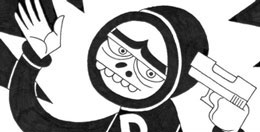 Comics conventions are changing. Some creators complain that it’s harder to sell books at cons than it once was. Distractions — cosplay, Hollywood — creep in and attract larger crowds, but don’t increase comics sales at the events. Having attended Boston Comicon in August, Paul shares the experience with Tim, and discussion ensues on problems that cons face going forward.
Comics conventions are changing. Some creators complain that it’s harder to sell books at cons than it once was. Distractions — cosplay, Hollywood — creep in and attract larger crowds, but don’t increase comics sales at the events. Having attended Boston Comicon in August, Paul shares the experience with Tim, and discussion ensues on problems that cons face going forward.
Paul did buy a couple of indy books in Boston, and we discuss them:
Podcast: Play in new window | Download
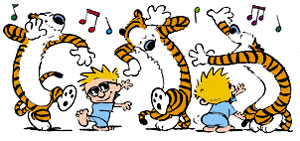 FLASHBACK! From 1985 to 1995, Bill Watterson’s Calvin and Hobbes challenged newspaper readers with imaginative stories, beautiful art, philosophical discussions, and ROTFL gags. Watterson famously eschewed commercialism, not only in the strip, but in real life, approving no C&H tie-in products other than books of strips and a calendar or two. Tim and Kumar discuss this game-changing strip and how relevant it remains today.
FLASHBACK! From 1985 to 1995, Bill Watterson’s Calvin and Hobbes challenged newspaper readers with imaginative stories, beautiful art, philosophical discussions, and ROTFL gags. Watterson famously eschewed commercialism, not only in the strip, but in real life, approving no C&H tie-in products other than books of strips and a calendar or two. Tim and Kumar discuss this game-changing strip and how relevant it remains today.
Originally published September 6, 2010
Podcast: Play in new window | Download
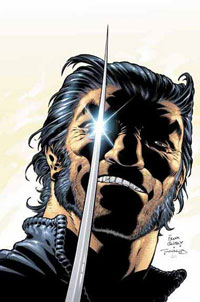 In the world of corporate comics, creators are challenged to put together a run on a given book that will stand out against everything that’s come before in that book, and leave a mark on the series that will last well beyond their run. Grant Morrison’s New X-Men run, from 2001 to 2004, met that challenge. In the ten years since he left the book, several characters and situations he set up have endured, including Fantomex, the Stepford Cuckoos, and Scott Summers’ relationship with Emma Frost. Morrison had a good handle on all his characters, old and new, and introduced the new ones in a way that made us care about them, something that certain comics writers have failed to do.
In the world of corporate comics, creators are challenged to put together a run on a given book that will stand out against everything that’s come before in that book, and leave a mark on the series that will last well beyond their run. Grant Morrison’s New X-Men run, from 2001 to 2004, met that challenge. In the ten years since he left the book, several characters and situations he set up have endured, including Fantomex, the Stepford Cuckoos, and Scott Summers’ relationship with Emma Frost. Morrison had a good handle on all his characters, old and new, and introduced the new ones in a way that made us care about them, something that certain comics writers have failed to do.
Of course, it’s not perfect. The X-men going public seemed to be the biggest event of the run — somehow overshadowing the slaughter of six million mutants on Genosha. The art was inconsistent — great when Frank Quitely was on it, but questionable some other times. This week Tim and Kumar examine Morrison’s run, particularly the initial “Cassandra Nova” arc.
Podcast: Play in new window | Download
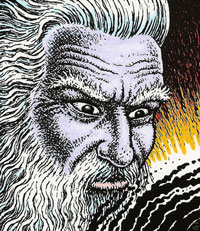 Perhaps one of the most puzzling comics releases in years was The Book of Genesis, Illustrated by R. Crumb. While it’s a virtuoso art performance, the exact purpose of the book was puzzling to Crumb fans (“It’s not a parody?!”) and religious readers (“This comic is not for kids?!”) alike. Both groups have been taken aback by how straight Crumb plays it — neither parodying nor bowdlerizing the work. That’s not to say that nothing in it is Crumb’s own interpretation. Tim and John discuss the issues raised — both by Crumb and by his audience.
Perhaps one of the most puzzling comics releases in years was The Book of Genesis, Illustrated by R. Crumb. While it’s a virtuoso art performance, the exact purpose of the book was puzzling to Crumb fans (“It’s not a parody?!”) and religious readers (“This comic is not for kids?!”) alike. Both groups have been taken aback by how straight Crumb plays it — neither parodying nor bowdlerizing the work. That’s not to say that nothing in it is Crumb’s own interpretation. Tim and John discuss the issues raised — both by Crumb and by his audience.
Podcast: Play in new window | Download
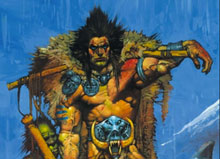 Big sweaty muscles, huge breasts, decapitations, and general dark ages carnage. Sounds like another everyday barbarian comic. That is, until you find out about the feminism, Celtic folklore, unreliable narration, matriarchy, humor, and unpredictable art. Kumar and Dana hew and cleave their mighty battle axes through Pat Mills and Simon Bisley’s 2000 AD classic Slaine The Horned God.
Big sweaty muscles, huge breasts, decapitations, and general dark ages carnage. Sounds like another everyday barbarian comic. That is, until you find out about the feminism, Celtic folklore, unreliable narration, matriarchy, humor, and unpredictable art. Kumar and Dana hew and cleave their mighty battle axes through Pat Mills and Simon Bisley’s 2000 AD classic Slaine The Horned God.Podcast: Play in new window | Download
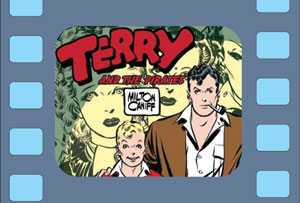 In May, comics creator and educator Ben Towle wrote a post on his blog entitled “Let’s Stop Using Film Terminology to Talk About Comics,” in which he suggested that using terms like “camera angle” and “shot” to describe comics storytelling may prevent creators from innovating new storytelling ideas that couldn’t be done in film. The post generated a fair amount of discussion around the Web (including this take on CBR).
In May, comics creator and educator Ben Towle wrote a post on his blog entitled “Let’s Stop Using Film Terminology to Talk About Comics,” in which he suggested that using terms like “camera angle” and “shot” to describe comics storytelling may prevent creators from innovating new storytelling ideas that couldn’t be done in film. The post generated a fair amount of discussion around the Web (including this take on CBR).
This week, the discussion continues here on the podcast, where Ben joins Tim and Mulele to talk about what inspired the post, possible reasons why we came to use film terminology in comics contexts, whether this really hobbles comics as a medium, and what (if anything) could or should be done to improve things.
Podcast: Play in new window | Download
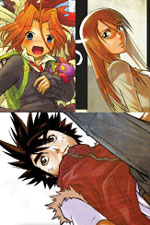
You may have been vaguely aware that a number of non-Japanese are drawing very manga-esque comics that are published in English only. They’re known as Original English Language (or “OEL”) manga, and many of them are published by Seven Seas Entertainment. Is this an area of comics worth exploring?
This week, Kory and Tim randomly pick up three of Seven Seas’ OEL titles (clockwise from upper right): The Outcast, by Vaun Wilmott and Edward Gan; Free Runners, by Bill Strauss and Jennyson Rosero; and Hollow Fields, by Madeleine Rosca.
Podcast: Play in new window | Download
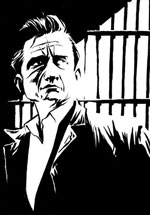 FLASHBACK! Though Asterios Polyp made the point that comics and (written) music are similar, doing a comic about music is not such an easy task. But Reinhard Kleist beautifully presents the music, and life, of a country music legend in Johnny Cash: I See a Darkness, recently released in English. How does it compare with the Cash biopic Walk the Line? Tim and Paul review.
FLASHBACK! Though Asterios Polyp made the point that comics and (written) music are similar, doing a comic about music is not such an easy task. But Reinhard Kleist beautifully presents the music, and life, of a country music legend in Johnny Cash: I See a Darkness, recently released in English. How does it compare with the Cash biopic Walk the Line? Tim and Paul review.
Originally published March 1, 2010
Podcast: Play in new window | Download